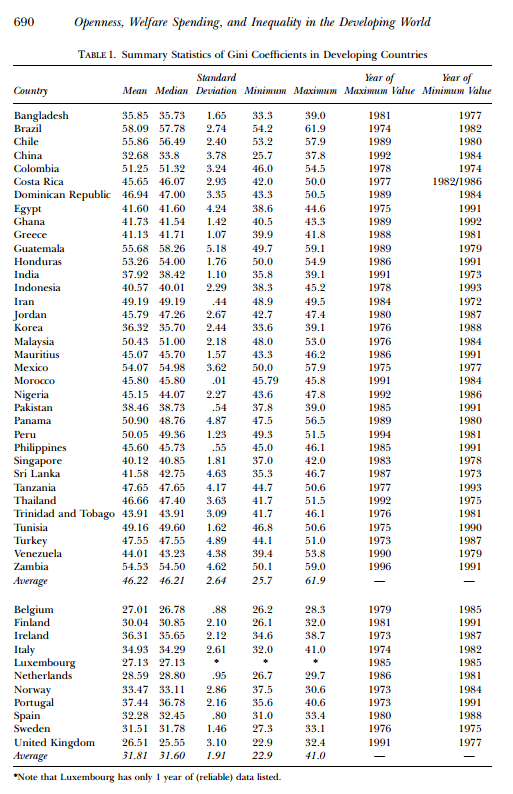The Economist has a nice article on the fact that global GDP in PPP-dolars has been revised upwards because the International Comparison Programme has documented that many prices on many products in many countries are lower than last time they checked. Interestingly, the extra purchasing power is not evenly distributed, and the article mentions India, China, Russia and Ukraine.
The article is worth reading for many reasons, one of them being that it includes a simple explanation of PPP-dollars and why calculating them requires knowing prices.
The article does not, however, spell out what I assume is an immediate consequence of the revised numbers: That absolute poverty has fallen by more than previous data indicated, and that global inequality between countries have fallen (this should be the case because lower prices in China and India mean hifger purchasing power for many poor people).
After some searching I can confirm the consequences for global inequality. In a blog post by the World Bank we find the following remarkable statement:
The share of the global population living in economies where the mean GDP per capita is below the global average decreased from 75 percent in 2017 to 56 percent in 2021.
That is a substantial decrease in only 4 years! Also, the blog post says the following:
The intercountry Gini coefficient for PPP-based GDP per capita improved over the years, from 0.486 in 2011, to 0.466 in 2017, to 0.458 in 2021.
The blog post even has Lorenz-curves:

The article in The Economist also does not mention why some prices have fallen in a way that increases purchasing power of the poor. The fact is that the development is only to be expected as a result of market forces: Where more people are poor, it is more important to produce cheaply and to invent and produce cheaper substitute good. The article touches upon this when they write:
And often the same consumer need is met by different goods in different parts of the world. In rural Thailand, workers live on rice. In similar parts of Ethiopia, they live on teff. But "rice is hard to find in Ethiopia and teff is impossible to find in Thailand, so price comparisons are not possible," as Angus Deaton of Princeton University and Alan Heston of the University of Pennsylvania have pointed out.
Luckily, a paper in Southern Economic Journal by myself and Therese Nilsson shows that inequality of purchasing power is likely to be lower than inequality of income precicely because lower prices to some extent mitigate poverty. The revised data from the World Bank show that this is not merely a theoretical oddity, it an important mechanism behind falling poverty.
See further
Bergh, Andreas, & Therese Nilsson. "When More Poor Means Less Poverty: On Income Inequality and Purchasing Power". Southern Economic Journal 81: 232–46.

